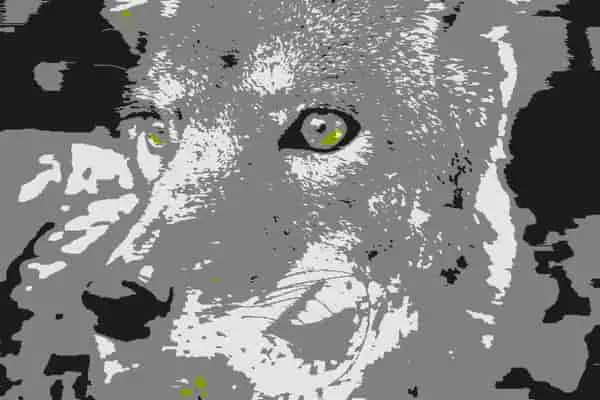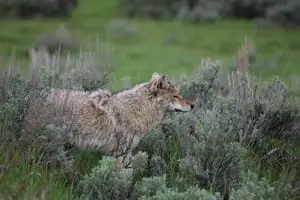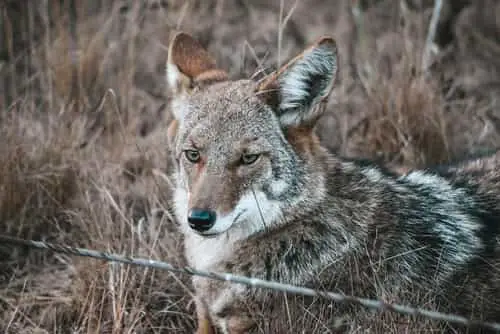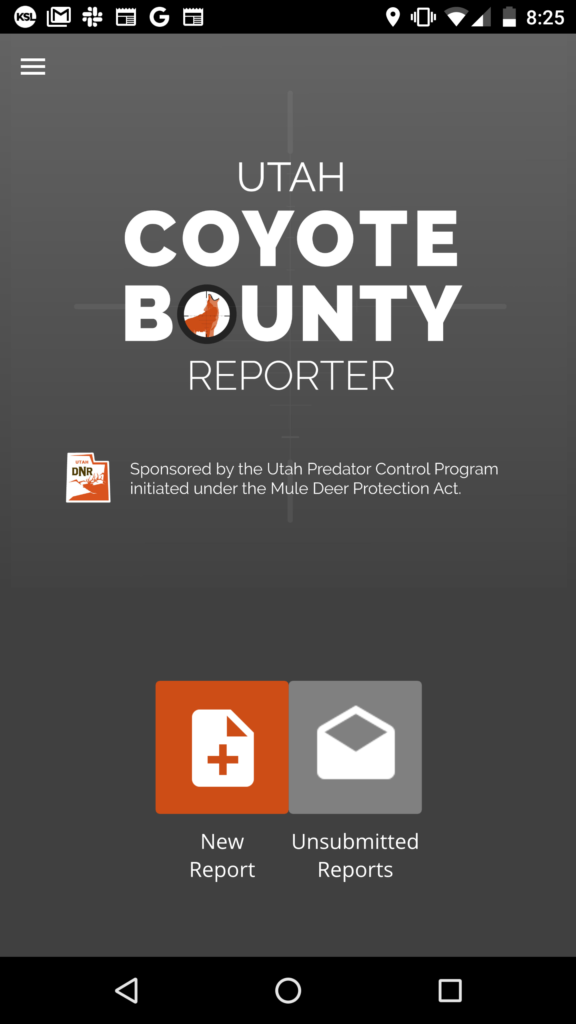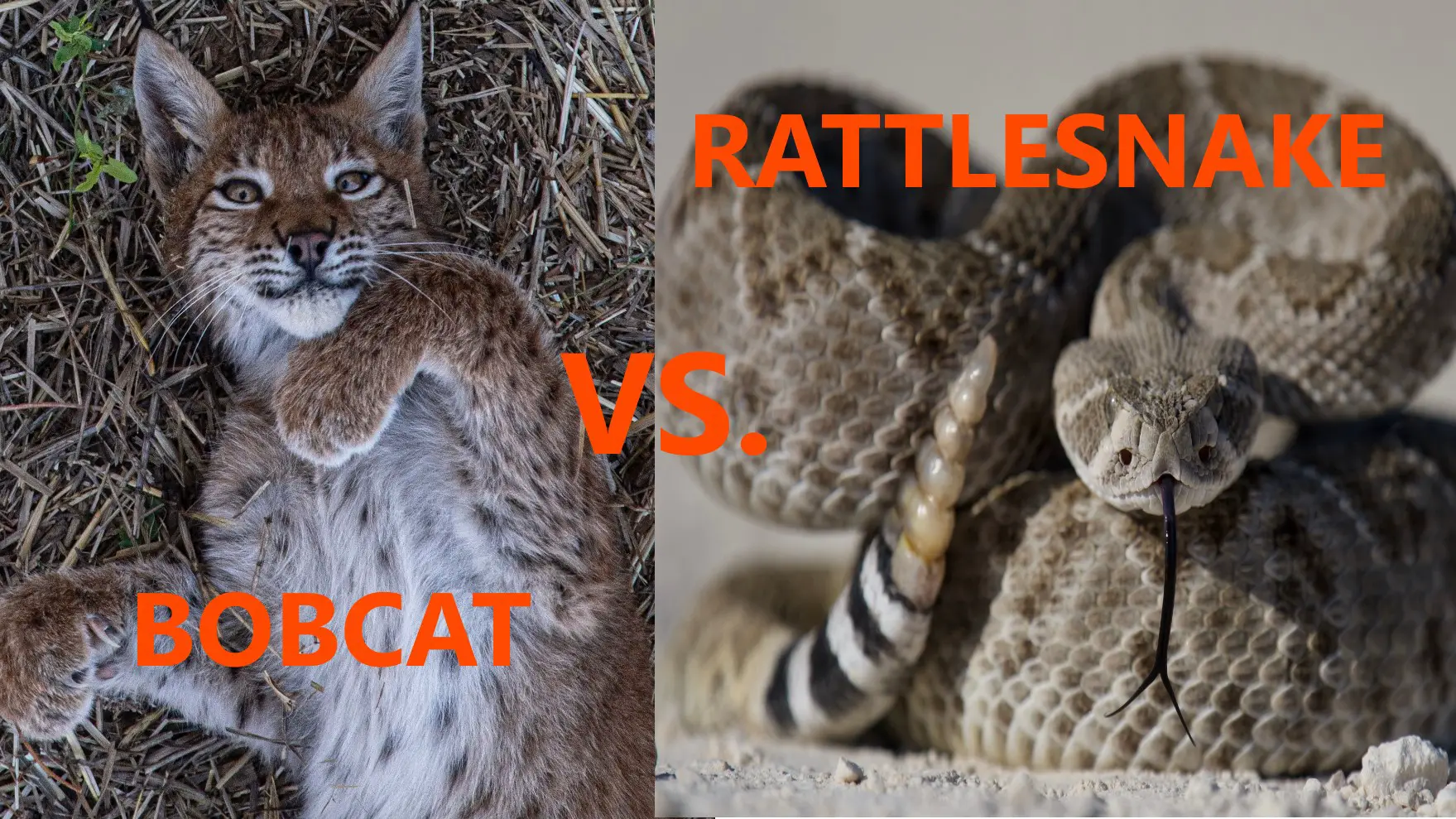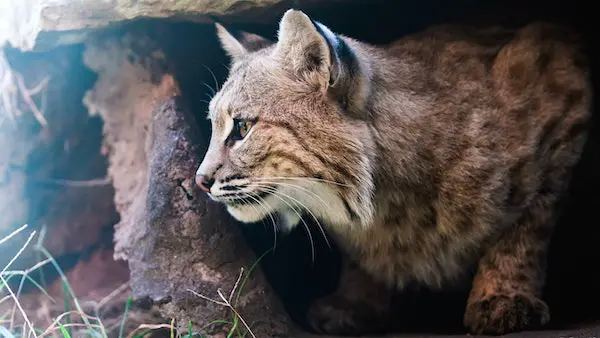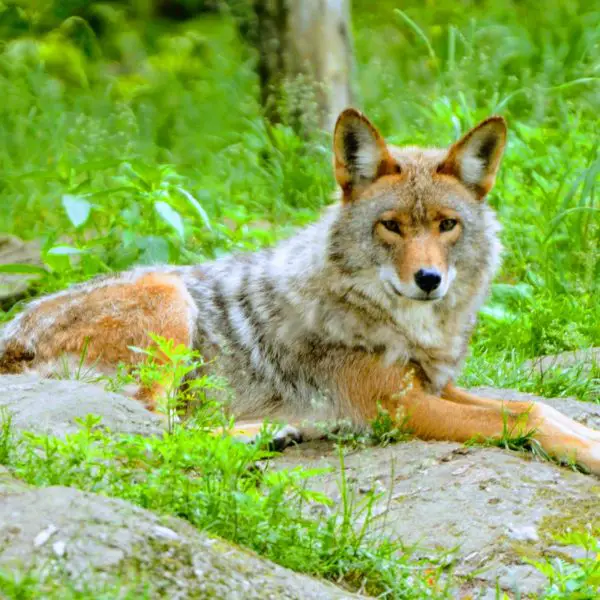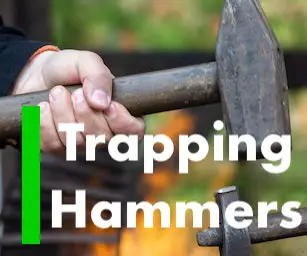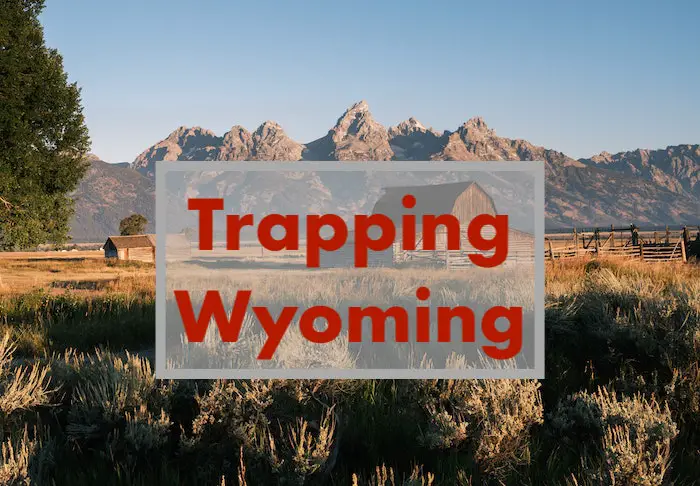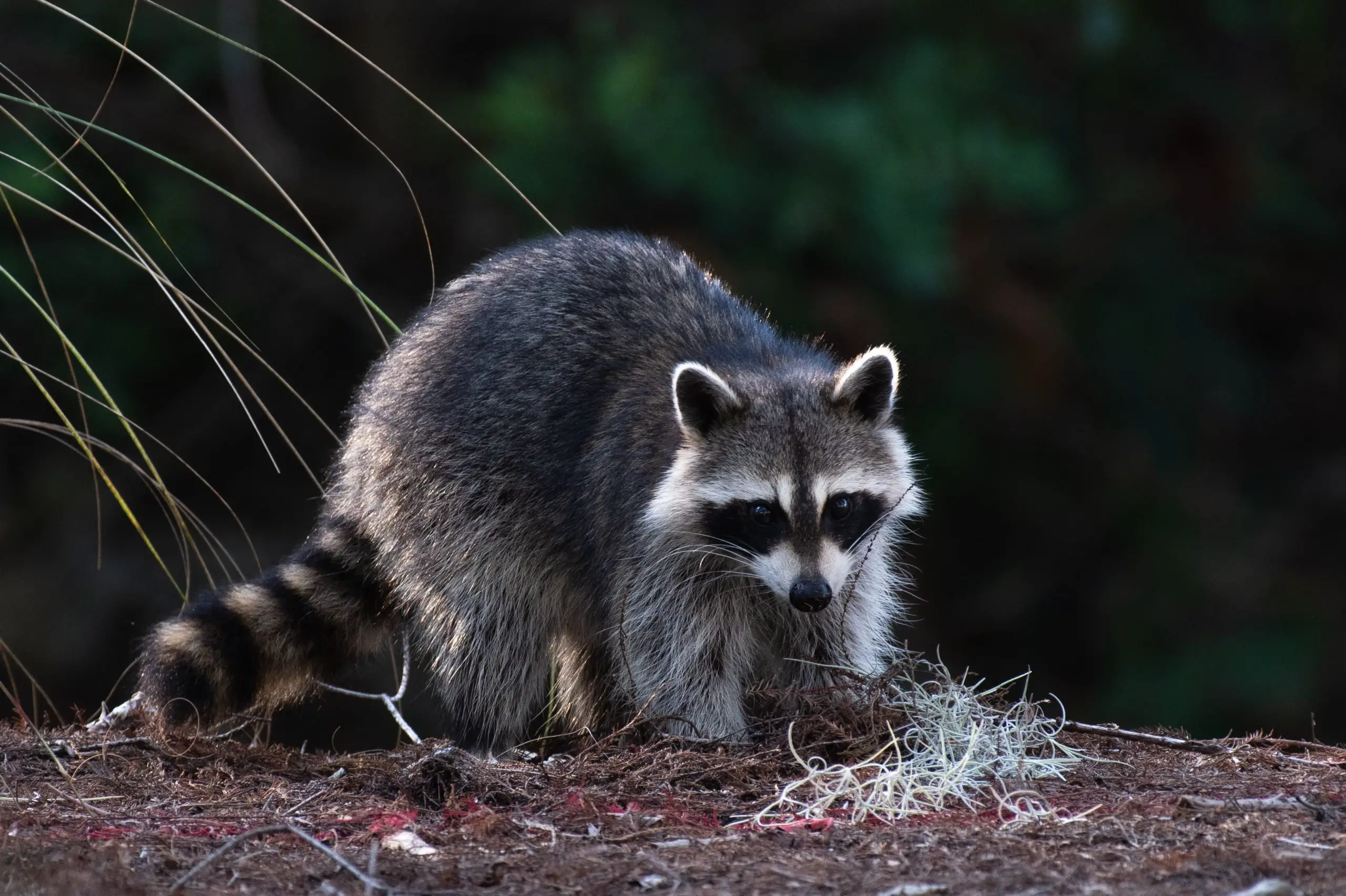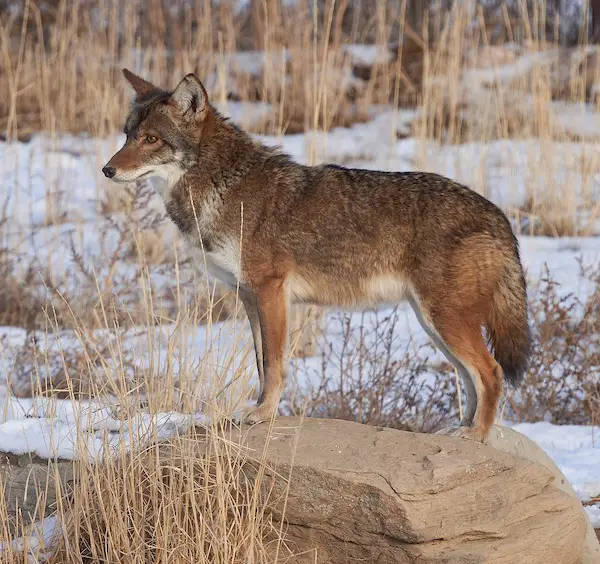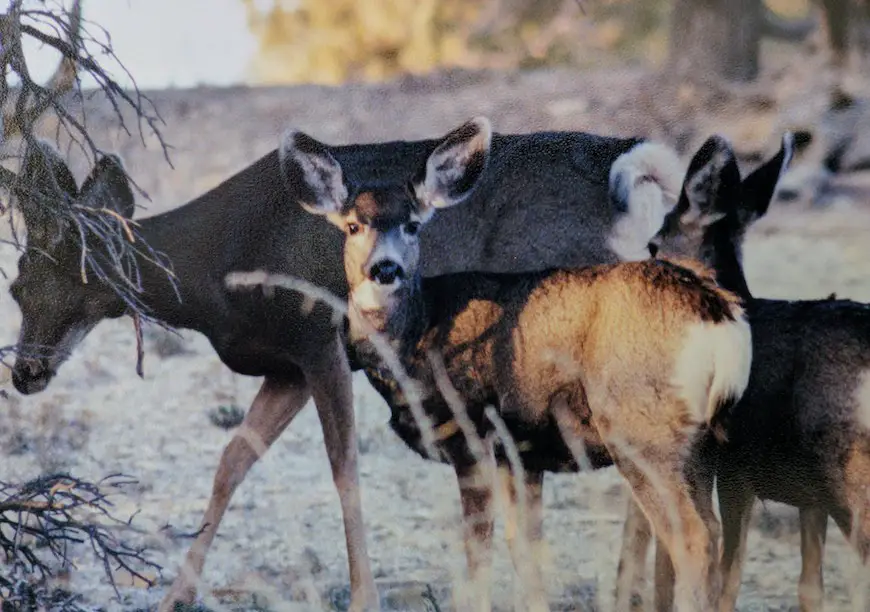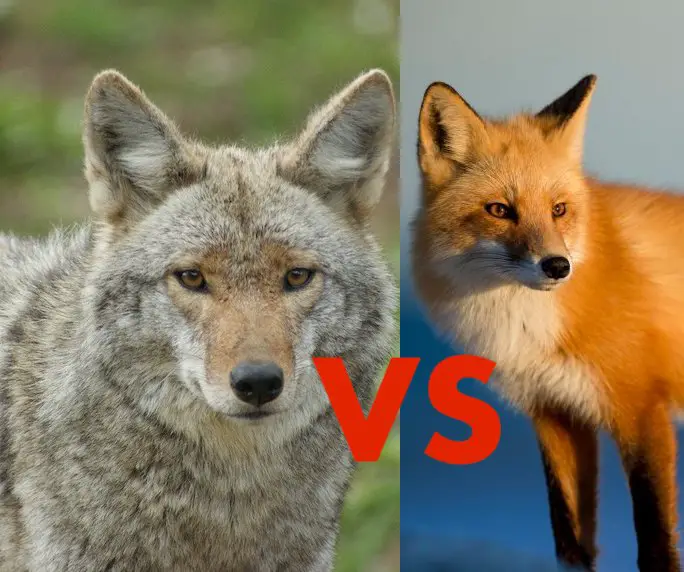Coyote trapping tips and tricks
Tricking a coyote to step in the right spot has fascinated me for years. I have been trapping for several years and I wanted to share some of the tips and tricks that I have learned over the years.
Here are twenty-two tips and tricks to catch more coyotes. The goal of these suggestions is to make your trapping experience more successful, so you can catch more coyotes. So let’s get started!
Table of contents
- Coyote trapping tips and tricks video
- Control your scent
- Boil your traps
- Die your traps
- Wax your traps
- Bed your trap properly
- Use a good bait, lure, and urine
- Make sure your trap has enough swivels
- Make sure your trap has tags
- Don’t use tons of blocking
- Have a good backing on the trap location
- Use a dirt hole set
- Trapping equipment
- Make your traps quick to check
- Don’t bring a lot of extra equipment
- Keep bait and traps separate
- Always carry a catchpole when checking traps
- Use a .22 Long Rifle for dispatching coyotes
- Dirt anchors are your friend
- Set your traps on sign
- Check all laws before you start trapping
- Take the Utah bounty quiz and have the app ready to go on your phone
- Collect $50 bounty for coyotes taken in Utah
Coyote trapping tips and tricks video
Control your scent
A coyote nose is way better than any human nose. They will know you have been in the area, so we need to reduce human smells as much as possible.
The first thing you can do is only touch your trap with rubber gloves on. This will keep a lot of the sent from your hands off your trap.
If a coyote can smell your trap because you touched it, the coyote may dig it up out of curiosity.
You can also wear rubber boots to keep the sent off the ground when you are walking around your trap set.
When you are digging the hole to put your trap in can also spread your sent from kneeling on the ground. You can control your sent in a few ways.
The first one is you can get a pad that you can kneel on. This will reduce your sent on the ground in front of the trap and can be nice padding for your knees.
Another way to make this faster is to get some construction knee pads. They will reduce the scent you leave as well.
Boil your traps
Boiling your traps removes a lot of oils and human odors. These odors can distract the coyote from the bait and allow it to dig up the trap.
Traps especially need to be boiled to clean and remove human, factory, or animal smells. Traps need to be cleaned when you believe a coyote could smell the trap and be more interested in it.
Be careful not to touch the traps, This could leave your odor on them and reverse the point of the boiling process.
Die your traps
Dying your traps is a very common practice. The die is used to get the traps a similar color as the dirt so that the coyote is not alarmed if the trap is slightly uncovered.
Dying your trap can work better if the trap has a slight bit of rust on it. You can leave your trap outside for a while and then die it.
When trapping coyotes dying your trap is not always necessary. Many people have caught many critters in their traps without dying them.
Dying your trap will increase your odds of catching those hard to catch coyotes.
To die your traps place die and water in a pot and boil the trap in the die and water.
Wax your traps
Waxing your traps, after you die them, is a good way to protect your trap and keep them working longer. Also with a fine coat of wax, your trap will fire faster and close faster.
To wax your traps you need to melt a pot of wax. There needs to be sufficient wax in the pot to submerge the traps.
If you are not going to have enough wax to submerge your trap, add water to the pot before you start boiling the wax.
Be careful with boiling wax and water. Be prepared to put out a fire if need be.
Another safety tip is don’t pour cold water into the boiling wax. This can cause a bad reaction and you can get burned.
Once your wax has completely melted, you can submerge the trap in the wax and water.
When the trap has reached the temperature of the wax and water pull it out and the wax should stick to the trap. Hang the trap to dry and cool for a few minutes.
This process should leave a fine layer of wax on the trap. This will help your trap last longer and work better.
Bed your trap properly
One of the big coyote trapping mistakes I initially had was when a coyote found my trap because it wobbled in the dirt. I think the coyote stepped on the edge of the trap and then the trap shifted underfoot.
When I came back to check the trap I was very surprised to see that the trap had been flipped over and dug up. This was super frustrating, but I knew that the coyotes were in the area.
This happened a few times and then when I got the traps correctly bedded I caught my first coyote.
When you set your trap you need to dig a hole to put the trap in. When you put this trap in the hole the goal is to remove all wobble in the trap when pressing on the jaws and edges of the trap.
When you place the trap in the hole and move it in a short circular or back and forward until the trap stops wobbling.
After this, you can add dirt around the jaws and this will help stabilize it as well. Make sure you don’t pack the dirt under the pan of your trap. The trap won’t fire if there is not enough room for the trigger to fire.
Use a good bait, lure, and urine
A good bait is a necessary part of most trapping sets. If a coyote is hungry and he wants the food he will be attracted to the set and stay longer.
For paste baits, it can be good to take a piece of sheep’s wool and put your bait in the middle of the wool. It can be attractive visually to the coyote.
Related: What do coyotes eat?
Here are some baits you might consider using.

Coyote bait 3 pack
Comes with two 8 oz bottles of coyote, fox, and bobcat bait and one 8 oz bottle of raccoon bait.
Lure is good for getting the coyote into the area of your trap. Lures are stronger smelling than bait and commonly have skunk, or coyote gland in them. Glands are the smelliest part of the coyote.
A long-distance call lure is a really strong lure and is usually used in colder months. They usually have more skunk in them than other lures.
When using lure putting it up high on a branch above your trap can help get coyotes close. Just remember that you are trying to get the coyote to step on your trap. The very best place for lure is right by your bait, in your dirt hole, or on the trap backing.
Urine is used to bring out territorial instincts. A coyote will be more jealous of what bait is buried in the hole if it thinks another animal has been there. The coyote will want to steal the bait from the other animal, and you’ve got him.
Some of the good urines that you can use are coyote, fox, and bobcat urine. Any of these will draw in a coyote in. Here are some urines that will be good to use:
Make sure your trap has enough swivels so your trap won’t bind up
Trap swivels make it so your coyote can’t get the trap to bind up and then be able to pry its foot out of the trap. Most traps come with a few swivels. Some like Duke traps come with half a swivel on the bottom.
To finish off the trap setup you will need to use J-hooks. J-hooks make the trap swivel better and you are less likely to get a bind the trap and pull out. Here are some J-hooks.
You can also add more swivels to the chain to increase the chances that the trap will not bind. The swivels and J-hooks can also be used to attach rings to steak your trap.
Make sure your trap has tags
In most if not all states a trap tag is required when trapping. The trap tag has the information and trapping license number of the trapper.
Trapping tags can be made of several things that you may have handy. Pipe strapping is one of them. I have seen guys write their trap number on the strapping with a permanent marker and then wire it on to the trap through the holes in the strapping.
You can make your own trap tags out of sheet metal by cutting it into strips and then drilling holes in each piece and writing the required info on each piece of metal. Then wire it to the trap.
There are also services that will make you a lot of trap tags for very cheap. Then you will have some on hand if one falls off or if you get some more traps. They will save you a lot of time making them.

Don’t use tons of blocking
When making sets for coyotes it is different than bobcats that are always in tight places. Coyotes don’t like being blocked in too much. A good backing is needed and then a few small twigs or rocks can be used to guide a coyote’s feet where to step, but too many guides can cause a coyote to shy away from the set.
Have a good backing on the trap location
Along with not too many guides around the trap, a good backing to your set will keep the coyote on the side of the bait that the trap is on. Coyotes are known for sneaking in the back of your set and sealing the bait and not getting caught.
The backing can be made of many things. Some of them are a log, rock, or a berm on the edge of a road or trail. If you use a step down set the angle of the hole and the dirt piled behind the set can be used as your backing forcing the coyote to get at the bait only from the side of the trap is on.
Use a dirt hole set
The easiest set to catch a coyote with is a dirt hole set. It is made with a hole in the dirt and a trap placed and buried in front of it. The hole is then filled with bait and lure that attract the coyote. Urine is used to make the coyote think another animal buried the bait there.
Learn more in our article about dirt hole sets right here.
More Trapping Sets
Trapping equipment
- Trapping Pack Baskets
- Trapping Bags
- Trapping Buckets
- Trapping Hammers
- Fur Shed
- Trapping Cabin
- How to make wax dirt
Beginner equipment sets
Coyote Trapping Kit
This kit comes with a lot of the equipment you will need to get started trapping fox or coyotes.
Make your traps quick to check
Making your traps easy to set can allow you to set more traps and catch more coyotes. Putting traps on the edge of a dirt road can decrease walking distance and you can move on to the next trap faster.
Some of the places near the road you can trap are at intersections or where a trail crosses the road. You could also trap under bridges.
Some of the places that would be good to trap are where you are seeing a lot of roadkill on the edges of the road. That is where the animals are moving and you will likely get more catches.
If you have to put a trap off the road because some states require you to put the trap a ways off the road, put it on the trail or along the river. If you can
Don’t bring a lot of extra equipment
When you are trapping you don’t need tons of equipment with you when you are setting traps. The extra equipment will just get in your way and make the trap setting process slower.
What I carry with me when setting coyote traps is:
- Hammer: For pounding steaks and digging trap beds.
- Traps: I take the traps I am planning to set at the location.
- Steaks: I take only the necessary steaks, earth anchors, or cable to secure the trap to the ground or a tree.
- Bait: Take my lure, bait, and urine.
- Sifter: This helps spread the dirt on top of the trap
- Pan cover: Keep the dirt out from under the pan.
- Dirt hole maker: could be a drill with an auger, a dirt hole punch, or a good steak.
If can leave the extras and only take the minimum equipment that you need you will be significantly faster.
Keep bait and traps separate
This is very important, and probably one of the most important tips. Coyotes love to dig up a trap that they can smell and if you keep your traps in the same container as the bait then the coyote will smell the bait on your trap and dig it up.
Most of the time a coyote does not get caught in the trap when it is digging up the trap. We want the coyotes to be interested in the bait and not the trap. Keep all smelly things away from the traps, including your hands, after you have boiled your traps.
Always carry a catchpole when checking traps
There are three reasons to take a catchpole with you on the trap line. The first one is it is vital to get non-target animals out of a trap.
You can put the noose over the animal you intend to release from the coyote trap and pin it to the ground. Don’t put the noose to tight on its neck, it can kill it if it is too tight. After you have pinned the animal to the ground you can push on the end of the catchpole with your body and then get the trap off. Then remove the catchpole from the animal.
The second thing a trap pole is good for is defense after you have let the animal go. Sometimes they will threaten or try to attack you if they feel threatened. Smack that sucker with the catchpole if he comes after you. Most of the time it won’t. It runs away as fast as possible.
Some of the animals you might catch unintentionally while trapping coyotes are, domestic dogs, fox, bobcat, house cat, or raccoon. Check your local trapping laws to see the legality of keeping the fox, bobcat, and raccoon.
The third use of a catchpole it to dispatch the coyote. It works well when you pull the cable as tight as possible and choke it out. I would only recommend this when you are not allowed to use a gun to dispatch.
Use a .22 Long Rifle for dispatching coyotes
It is important to carry a gun to dispatch a coyote. In cities you can’t usually shoot coyotes if you are trapping city nuisance animals, so use the catchpole.
What is the best place to shoot a coyote with a .22?
The best place to shoot a coyote with a .22 is right behind the solder. This is where the heart and lungs are located and will allow for a quick dispatch of the coyote in the trap.

Dirt anchors are your friend
Dirt anchors or earth anchors are lightweight steaks that work very well to secure your trap to the ground.
They are made of a cable with a piece of metal on one end and a cable with a loop to tie to the other end to attach your trap too. You use a special steak to drive the dirt anchor into the ground.
This is a good method to steak your trap for a few reasons.
The first is it is hard to get it out of the ground and you don’t need to be super worried if you pound it deep into the ground.
The second is that it is lightweight and does not add a lot more metal to your trap. Third, it allows you to carry fewer steaks with you and this can make your equipment lighter if you are walking or hiking to your sets.
Fourth you can leave them attached to your tap and just grab a trap and it is ready to go, no steaks needed.
Set your traps on sign
It is good to set your trap where you can confirm where coyotes have been. Look for scat or tracks this is the easiest way to see if there are coyotes in the area.
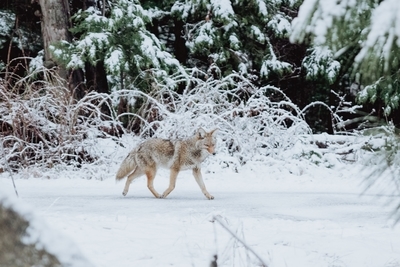
Another way is to set trail cameras before the season and see if you can start getting locations where you are consistently getting them on camera.
If you can’t find coyote sign, set traps near locations where coyotes will travel. Look for roads, trails, fence lines, ponds, and river banks. These are natural areas where coyotes pass and may find your bait.
Check all laws before you start trapping
Knowing all the laws and having the right trapping certifications are important when starting to trap coyotes.
Some of the important ones are having your trap tag securely attached to your trap with proper information on it. Remember bait laws, most states require bait to be covered so you don’t catch birds of prey. Some states require your trap to be off a dirt road and others allow trapping right on the road.
Take the Utah bounty quiz and have the app ready to go on your phone
If you are hunting coyotes in Utah, there has been money allocated to the protection of deer herds and the removal of coyotes. You can receive a bounty for properly checked in coyotes.
The first thing to do is to take the quiz to be enrolled in the Utah coyote bounty program.
The second thing is to get the app to track when you get the coyotes and to fill out the proper information needed for the kill. With the new app, it collects most of the info when you take a picture of the coyote.
Third is to shoot and document the coyote.
Fourth is the turn in at least the front two-thirds of the front of the lower jaw and a scalp with both ears on it.
Utah Coyote Bounty Program Info
Download Utah Coyote Bounty App
Check-in all coyotes at the DWR Utah for $50 bounty
All coyotes can be checked in at any DWR check-in point near you. After you have properly checked in coyotes within 365 days of kill then you will receive $50 for each properly documented coyote.
Trapping By State
- Alabama Trapping
- Alaska Trapping
- Arizona Trapping
- Arkansas Trapping
- California
- Colorado
- Connecticut
- Delaware
- Florida
- Georgia
- Hawaii
- Idaho
- Illinois
- Indiana
- Iowa
- Kansas
- Kentucky
- Louisiana
- Maine
- Maryland
- Massachusetts
- Michigan
- Minnesota
- Mississippi
- Missouri
- Montana
- Nebraska
- Nevada
- New Hampshire
- New Jersey
- New Mexico
- New York
- North Carolina
- North Dakota
- Ohio
- Oklahoma
- Oregon
- Pennsylvania
- Rhode Island
- South Carolina
- South Dakota
- Tennessee
- Texas
- Utah Trapping
- Vermont
- Virginia
- Washington
- West Virginia Trapping
- Wisconsin
- Wyoming Trapping
